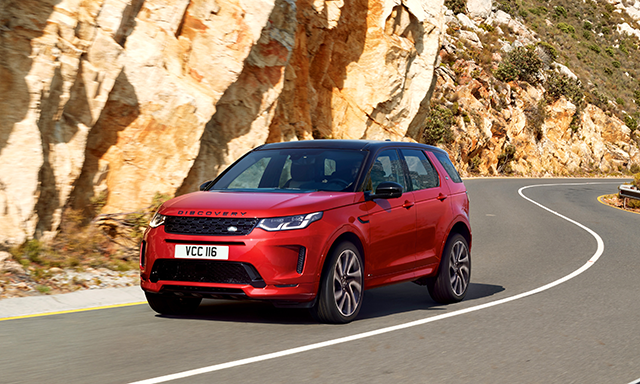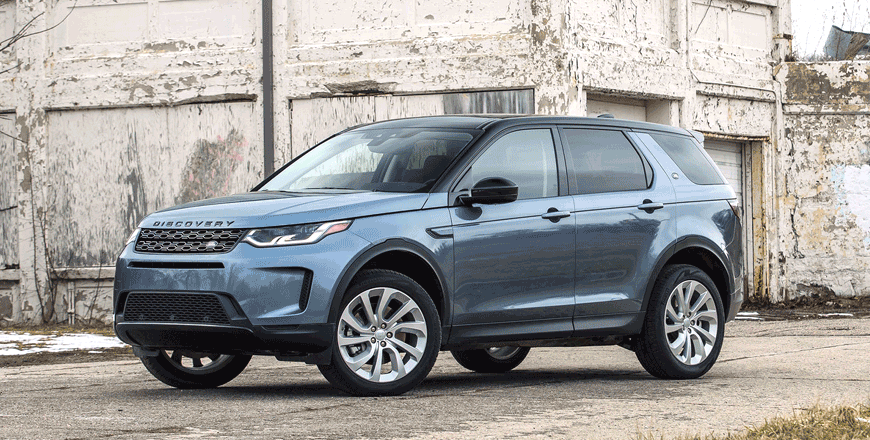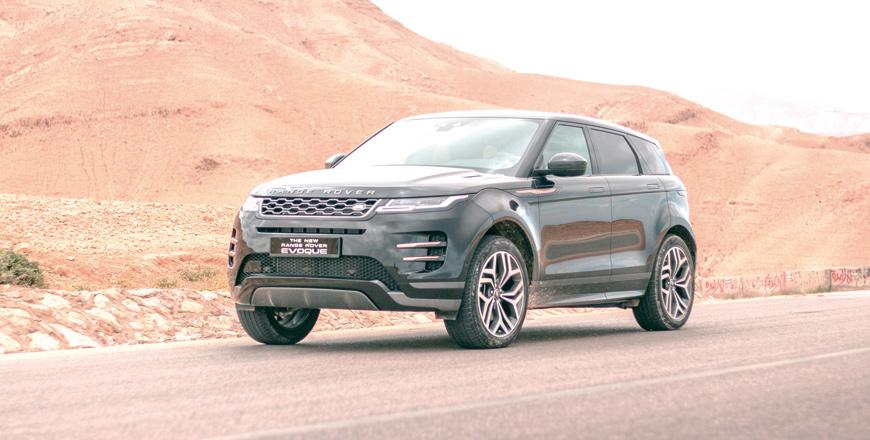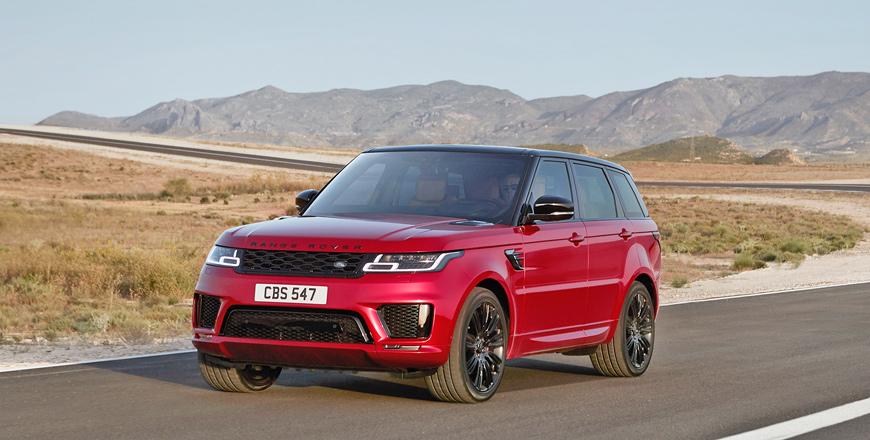You are here
Land Rover Discovery Sport P200: Revised, refreshed and re-discovered
By Ghaith Madadha - Apr 27,2020 - Last updated at Apr 27,2020

Photo courtesy of Land Rover
First launched in 2015 and revised for the current model year, the Land Rover Discovery Sport’s subtle aesthetic refresh is combined with a more significant driveline and technology overhaul. A practical and moderately sized family SUV with genuine off-road ability, smooth driving manners and cabin versatility that includes optional 7-seat configuration, the Discovery Sport was recently recognised as the 2020 Middle East Car of the Year awards’ best Compact Premium SUV in a category also contested by the Mercedes-Benz GLC-Class, Infiniti QX50 and its own Range Rover Evoque relation.
A new pecking order
Winning over its Evoque sister model with which it shares platform and much of its technology, engines and even basic design cues, the Discovery Sport’s victory comes due to it offering greater practicality and somewhat better value for a very similar product, despite the Evoque being pitched as more luxurious and stylish. This result also highlights the narrowing differentiation between the Indian-owned British manufacturer’s more accessible premium Land Rover products and its more high-end premium Range Rover badge vehicles, in terms of luxury, ability, technology, components and pricing.
Discretely face-lifted, the updated Discovery Sport rides on the same platform as before, but its body is, however, now 13 per cent stiffer and features rigidly-mounted subframes for improved refinement, comfort and collision safety. Marginally longer at the front, the revised Discovery Sport is little altered in design and still features a clamshell bonnet, floating roof design with forward-tilted C-pillars. It, however, looks more bulbous and imposing with its revised bumpers, including slimmer and taller front side intakes, which lend its fascia a higher-set and more imposing presence.
Subtle electrification
Freshened up with more angular front and rear light elements in place of its predecessor’s ‘crosshair’ style elements, the new Discovery Sport’s fascia has a more squinting and dramatic feel to it, while the rear looks distinctly more up-market. More extensively revised under its skin, the new Discovery Sport is now powered by Jaguar Land Rover’s in-house designed turbocharged 2-litre 4-cylinder Ingenium petrol engines, mated with a standard mild hybrid electric vehicle (MHEV) system, in place of the Ford Ecoboost-based engine of the same displacement that the model launched with back in 2015.
Developing 197BHP at 5,500rpm and 236lb/ft throughout a broad and easily accessible 1,250-4,500rpm torque band in entry-level P200 tuned version of two petrol versions using the same engine, the Discovery Sport’s combustion engine is aided by a 48-volt starter/generator MHEV system. Recovering energy on braking and storing it in underfloor batteries, it powers ancillary systems and contributes slightly to driving on hard acceleration. MHEV allows engine switch off below 17km/h on deceleration. Weighing more than its predecessor, the new Discovery Sport, however, returns slightly improved fuel efficiency partially owing to its MHEV system.
Confident and comfortable
Responsive from standstill with a quick-spooling turbo, and willing to its redline, the Discovery Sport P200 is, however, at its best in its torque-rich mid-range where it is smooth, flexible and effortless. Driving all four wheels through a slick shifting 9-speed automatic gearbox to best utilise its output for performance, versatility and economy over a broad range of ratios, the P200 accelerates through 0-100km/h in 9-seconds, 80-120km/h in 6.9-seconds and onto 207km/h. Meanwhile, it returns 7.8l/100km combined cycle fuel efficiency. Smooth driving and well insulated from noise, vibration and harshness, the Discovery Sport proved stable, reassuring and settled at speed.
A comfortable and confident drive, the Discovery Sport is an easy-to-drive and manoeuvrable SUV with compact dimensions and clever packaging inside. It features a well-adjustable and commandingly high driving position with good sightlines despite the high-set bonnet, and with an 11.8-metre turning circle, is easy to drive in town an confined parking areas. Comfortably forgiving over imperfections including a particular poorly maintained stretch of high way during test drive, the Discovery Sport’s suspension is set-up to well-absorb vertical impacts. It remains comfortable over all but the sharpest sudden bumps, despite large, firm optional R-Design package alloy wheels and 235/50R20 tyres.
Premium package
Turning tidily into corners with good grip and quick, direct and light 2.31-turn electric-assisted steering, the Discovery Sport’s sense of body lean may seem slightly exaggerated due to its high driving position. However, its balanced handling, cornering adjustability and outright grip lend it a reassuring confidence through twists and turns, and with its active torque vectoring four-wheel-drive, has an unexpected agility. A capable daily driver with genuine off-road ability, the revised Discovery Sport retains similarly good approach, departure and break-over angles as its predecessor, and the same 212mm ground clearance and 600mm water fording capability.
Featuring a standard Terrain Response 2 system that adapts various driving and system parameters for different conditions and surfaces, the Discovery Sport also features additional all-terrain systems and a ground view camera for more accurate manoeuvrability along narrow off-road routes. Highly well equipped with standard driver assistance, safety and convenience features too numerous to list in top HSE specification, it also features a rearview camera and mirror display with clear unimpeded views. With logical layouts, plenty of useful storage space, and roomy, versatile and configurable seating and cargo area, the Discovery Sport is practical and features quality materials and designs for a premium ambiance inside.
Specifications
- Engine: 2-litre, all-aluminium, turbocharged, transverse 4-cylinders
- Bore x stroke: 83 x 92.29mm
- Compression ratio: 10.5:1
- Valve-train: 16-valve, DOHC, continuously variable valve timing, direct injection
- Gearbox: 9-speed automatic, active four-wheel-drive
- Ratios: 1st 4.713; 2nd 2.842; 3rd 1.909; 4th 1.382; 5th 1.0; 6th 0.808; 7th 0.699; 8th 0.58; 9th 0.48
- Reverse/final drive: 3.83/4.544
- Power, BHP (PS) [kW]: 197 (200) [147] @5,500rpm
- Specific power: 98.6BHP/litre
- Power -to-weight: 103.6BHP/ton (kerb)
- Torque, lb/ft (Nm): 236 (320) @1,250-4,500rpm
- Specific torque: 160.1Nm/litre
- Torque-to-weight: 168.3Nm/ton (kerb)
- 0-100km/h: 9-seconds
- 80-120km/h: 6.9-seconds
- Top speed: 207km/h
- Fuel consumption, combined: 7.8l/100km
- Combined CO2 emissions: 177g/km
- Fuel capacity: 65-litres
- Length: 4,597mm
- Width, w/mirrors: 2,173mm
- Height: 1,727mm
- Wheelbase: 2,741mm
- Track, F/R: 1635/1642mm
- Overhang, F/R: 901/955mm
- Ground clearance: 212mm
- Wading depth: 600mm
- Approach/departure/ramp angles: 22.8°/28.2°/20.6°
- Maximum gradient: 45°
- Maximum side slope angle: 35°
- Aerodynamic drag co-efficiency: 0.33
- Headroom, F/R: 1,003/984mm
- Legroom, F/R: 993/968mm
- Shoulder room, F/R: 1,455/1,420mm
- Boot capacity, min/max: 897/1794-litres
- Unladen/kerb weight, 5-seat: 1,826/1,901kg
- Suspension, F/R: MacPherson struts/multi-link
- Steering: Variable ratio electric power-assisted rack & pinion
- Turning circle: 11.8-meters
- Lock-to-lock: 2.31-turns
- Brakes, F/R: Ventilated discs, 349mm/discs, 300mm
- Tyres: 235/50R20
Related Articles
A more affordable and family-oriented Land Rover SUV with compact dimensions and plenty of practicality, the Discovery Sport was at home bot
AMMAN — Somewhat controversial with Land Rover traditionalists when first launched in 2011, the compact Range Rover Evoque, however, popular
First launched in 2013 and face-lifted in 2018, the latest iteration of Land Rover’s second-to-flagship model, the Range Rover Sport receive



















